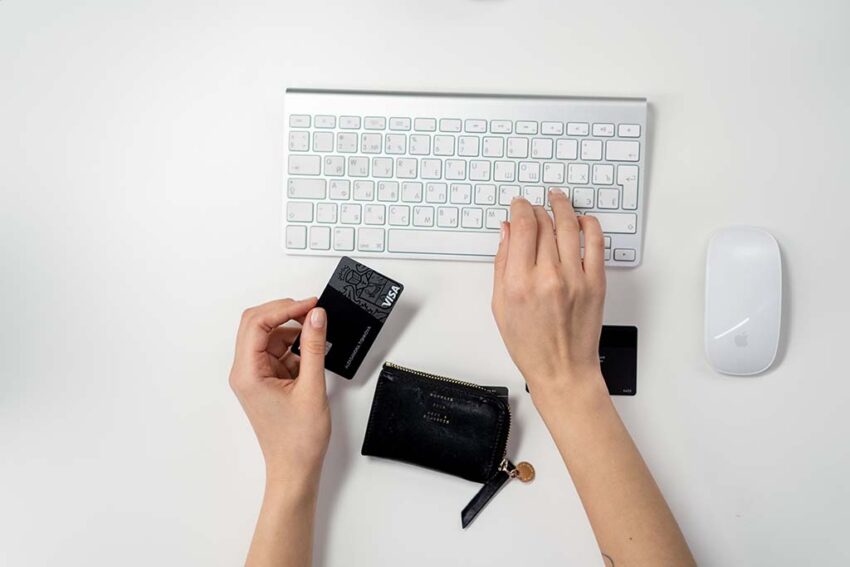Shopping online is more efficient and more efficient when compared with traditional purchases. However, there are greater dangers: the likelihood of encountering cybercriminals is many times more likely than real thieves. We provide our advice for making online shopping as secure as is possible.
The majority of fraudulent transactions using banks are carried out via the Internet. Every year, financial losses are growing.
What are the risks?
The risk is present when you shop on applications and websites with electronic wallets. online and mobile banking.
The most effective weapon used by cybercriminals is the phishing technique. That is, the term “phishing” means stealing private information like passwords, account or card information to get money out of a bank account or online wallet.
Thieves exploit the psychology of their victims They send messages via SMS, emails, or chat messages that ask to, for instance, “confirm account” or “restore access to the bank account”.
The emails contain a hyperlink to a phishing website that is a clone site of the bank, government agency or another organization. If you’re not aware of the scam, you’ll immediately transfer the money to the criminals when you enter your login, Internet bank password, or card information.
How do you safe yourself from phishing scams and other forms of cyber-fraud?
1. Only use personal devices.
Purchase items, access your mobile or online banking from your personal device, whether tablet or computer. You must ensure that you have your password on your devices.
If you lose your mobile phone or tablet that SMS-informing banking is linked, immediately contact the bank and cut off all services associated with the lost phone number.
2. Beware of viruses.
You should ensure that you have an antivirus on all of your devices including mobile phones, and keep them updated regularly. A reliable antivirus package provides protection against phishing as well as viruses.
3. Select sites that are safe.

Don’t click on hyperlinks in texts and emails sent by unknown people. Even if you think the message comes from an organization or person that you are familiar with, don’t hurry to open the messages. There’s a chance that fraudsters have access to their accounts and would like to access your information also.
Enter the web addresses of the banks manually or better still keep those addresses from your banks as well as government agencies and other institutions within your Bookmarks.
Always look at the address bar on your browser’s address bar. Sometimes, you may be redirected to a fraudulent website when you go between pages of a website you are familiar with to another.
Make sure you shop only on websites that provide a secure link. The address of the site starts with the letters https ://. There is a locked padlock icon on the bar of address.
Better yet, verify the security certificate for the website. To check this you need to hit the lock button, and within the pop-up window choose “View Certificates. Make sure that the certificate was given to the site that you are on and is not expired.
Pick well-known online shops and services. Review the opinions of other customers. It is recommended to read reviews on various independent websites. A legitimate seller gives complete details about himself, including contact number, address, phone number and any other information about contact.
4. Make use of a secure payment method.
If you visit the page for payment, search for the logos of the MasterCard SecureCode, Visa Secure and Mir Accept. These programs utilize 3D-Secure security to protect you even more when shopping on the internet.
If the store’s website uses this type of technology the store will redirect you to the secure site of the bank when you enter your card information. In order to confirm your purchase, the merchant will send an SMS with a one-time password the phone number connected to your account or card. Don’t divulge this code to anyoneelse, just type it into the designated box on the page for payment.
5. Make sure you have a separate card to use to shop online
If you frequently purchase items or pay for services through the internet, like fines or phone calls it is safer to use separate credit card. It should be loaded only with the amount you’re planning to spend and establish a limit for the amount of transactions you are able to make each day. Certain banks let you make virtual credit cards which can be used for one purchase online.
6. Don’t disclose your personal details to anyone.
Most of the time, it’s not payment systems, banks or online retailers who are responsible for the theft of money from your bank account, but the shrewd customers themselves.
Fraudsters have a myriad of tricks to win your confidence. Your job isn’t to fall victim to these scams. Do not divulge your credit card information, personal details or SMS codes to anyone else.
Do not divulge your PIN-code and the card verification code (CVV2/CVC2/PPK2) which is the three last digits on the reverse of your credit card. Bank employees don’t have any right to require these information from you. If someone attempts to obtain these information You can be certain that he’s a fraudster.
The same rules must be adhered to in the case of an online account. Never divulge your account’s username or account password to any person.
7. Create SMS notifications for card transactions.
You’ll be aware of the money you did not have, and you will be able to immediately react by blocking the card and rescinding the transaction.

